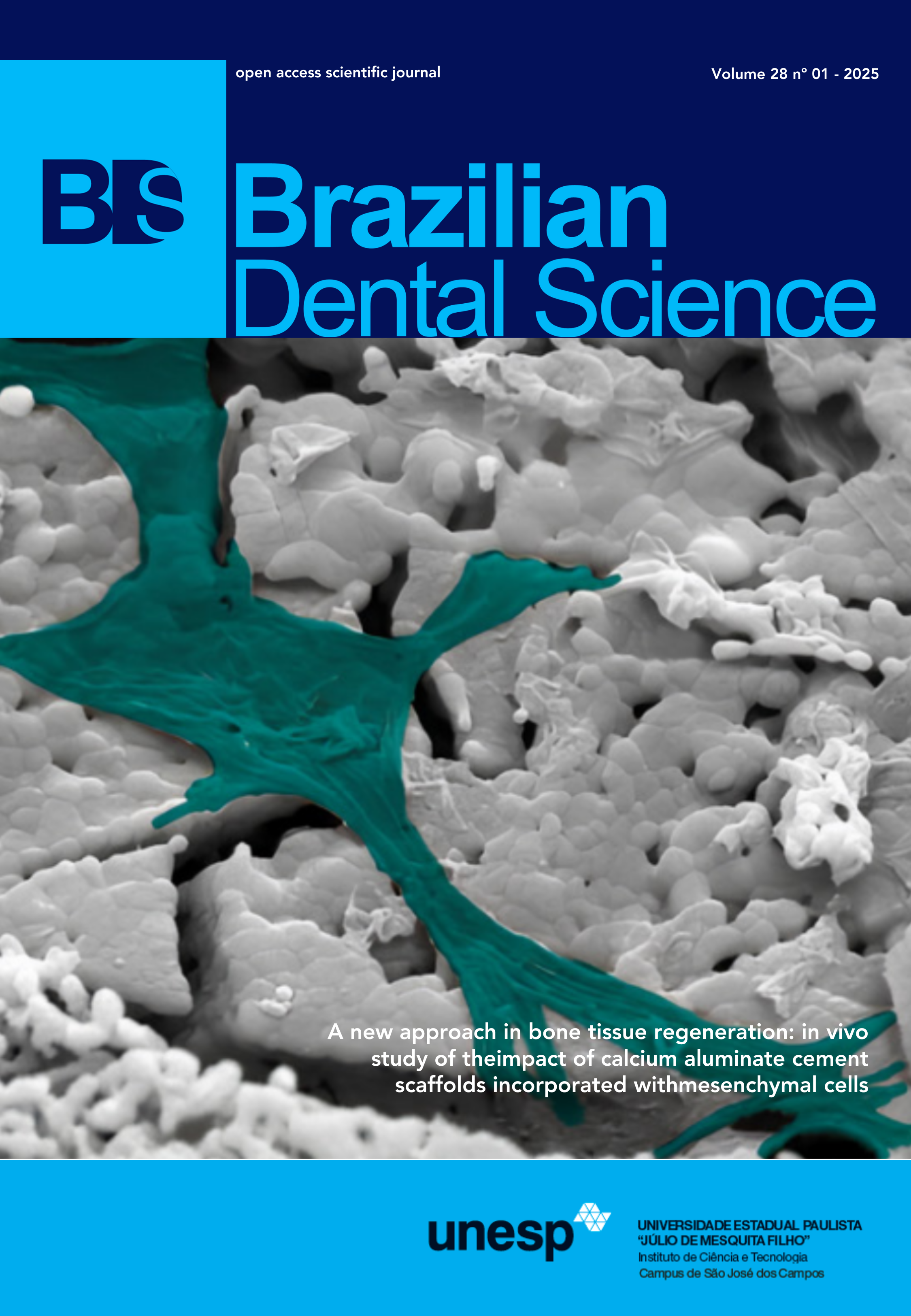In vitro investigation of flower-like micro-nano topography modifications to improve titanium implant surface properties
DOI:
https://doi.org/10.4322/bds.2025.e4663Resumo
Objective: The surface modification of titanium implants has demonstrated significant potential in enhancing the surface characteristics of the implants, improving their performance, and minimizing the risk of infection. This study examines the advantages of combining acid etching and alkaline heat treatment to enhance titanium implant surfaces and evaluate their antibacterial effectiveness. Material and Methods: Titanium was divided into four groups: machine surface (MA), samples subjected to a single acid etching (MR), and samples that experienced both a single acid etching and two distinct alkaline heat treatment protocols (MN1 and MN2). The surface properties (topography, chemical composition, surface roughness, and wettability) and antibacterial evaluation against Porphyromonas gingivalis were evaluated. The statistical significance of differences among the groups was determined using ANOVA and Tukey’s Post-Hoc Test (P<0.05). Results: The MN group significantly transformed titanium surfaces into a micro-nano flower-like topography with hydroxyl and sodium titanate structures. The highest surface roughness was shown in MN1 (Sa= 7,58 ± 0,64; Sq 9,78 ± 0,8) (P<0.05) and the lowest wettability were shown in MN2 (25,75 ± 8,2) (P<0.05). Conversely, MN2 exhibited the lowest wettability, measured at 25.75 ± 8.2 (P < 0.05). Antibacterial assessments revealed a notable reduction in the growth of Porphyromonas gingivalis on the MN2 modified surfaces at 27.43 ± 10.43% (P < 0.05). Conclusion: The combination of acid etching and alkaline heat treatment has shown the ability to create a micro-nano surface with outstanding properties and significant antibacterial effects. This advancing titanium dental implant technology presents a valuable alternative for improving clinical outcomes in dental applications.
KEYWORDS
Antibacterial agents; Dental implant; Medicine; Surface properties; Titanium.
Downloads
Downloads
Publicado
Como Citar
Edição
Seção
Licença
Copyright (c) 2025 Brazilian Dental Science

Este trabalho está licenciado sob uma licença Creative Commons Attribution 4.0 International License.
TRANSFERÊNCIA DE DIREITOS AUTORAIS E DECLARAÇÃO DE RESPONSABILIDADE
Toda a propriedade de direitos autorais do artigo "____________________________________________________________________" é transferido do autor(es) para a CIÊNCIA ODONTOLÓGICA BRASILEIRA, no caso do trabalho ser publicado. O artigo não foi publicado em outro lugar e não foi submetido simultaneamente para publicação em outra revista.
Vimos por meio deste, atestar que trabalho é original e não apresenta dados manipulados, fraude ou plágio. Fizemos contribuição científica significativa para o estudo e estamos cientes dos dados apresentados e de acordo com a versão final do artigo. Assumimos total responsabilidade pelos aspectos éticos do estudo.
Este texto deve ser impresso e assinado por todos os autores. A versão digitalizada deverá ser apresentada como arquivo suplementar durante o processo de submissão.




























